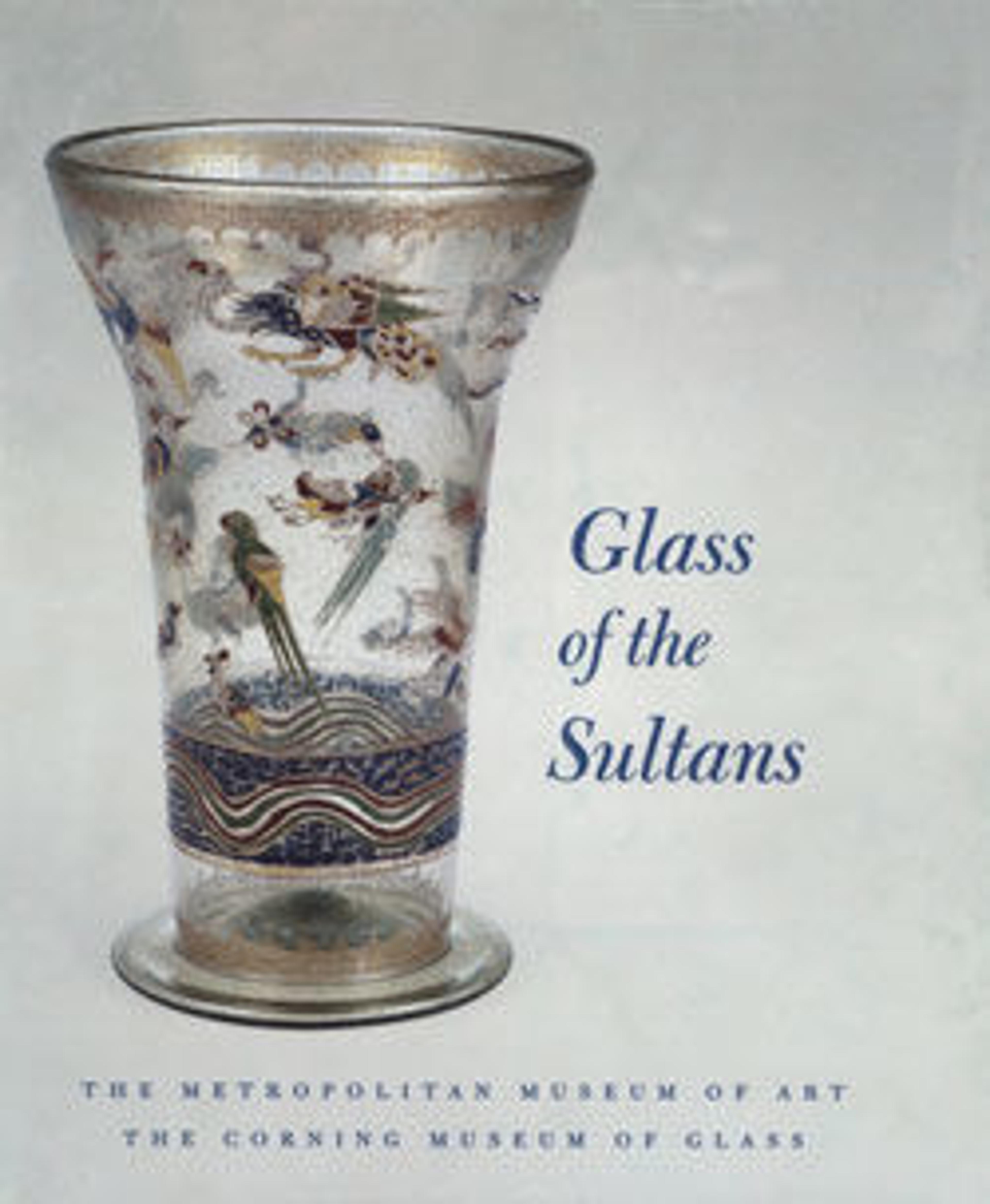
Glass of the Sultans
Islamic glassmakers were not only brilliant technicians and innovators in their own right, but they also preserved many of the methods of their Sasanian and Roman predecessors, passing them on centuries later to Venetian and other masters. Glass of the Sultans is the first comprehensive study of the accomplishments of these craftsmen, which are of lasting significance both to Islamic and to world art. Drawing on objects from numerous domestic and foreign collections, the volume ranges from the seventh to the nineteenth century and through many of the major artistic centers of the Muslim world—and beyond, to India and Europe. It is the catalogue of an exhibition held at The Corning Museum of Glass, Corning, New York; The Metropolitan Museum of Art, New York; and the Benaki Museum, Athens.
Five essays present the most current scholarly assessment of the subject. The first focuses on how several factors—the customary lack of inscriptions on the objects, the fragility of their material, and their widespread dispersion through trade—complicate any study of the history of Islamic glass production. The next essay traces the interest in these objects, which has continued to grow since its first blossoming in Europe during the mid- and late nineteenth century. Archaeological discoveries—from the earliest excavations at Fustat, Samaria, and Nishapur to more recent finds from the Serce Limam shipwreck, off the Turkish coast, and from the Famen Temple, in China—are the subject of the third essay. In discussing the chemistry and technology of Islamic glass, the fourth essay touches on such important topics as how the chemical composition of an object may throw light on its provenance and what a typical medieval Islamic glass factory must have been like. Finally, various relevant glassworking and glass-decorating techniques are described and shown in more than seventy illustrations.
The 157 masterworks published here, many for the first time, constitute the most generous selection ever of high-quality Islamic glass. They cover a wide variety of objects, from perfume flasks to mosque lamps, candlesticks to drinking horns, inkwells to lutqqa bases. All the important Islamic glassworking and glass-decorating techniques are represented, ranging from the simplest undecorated free-blown objects through examples of mold-blown, hot-worked, mosaic, and cut and engraved glass and culminating in the elaborate gilded and enameled vessels that mark the pinnacle of the Islamic glassmakers' art. Also of interest are the examples of European glass objects either made for the eastern market or directly inspired by Islamic models, such as a thirteenth-century Venetian enameled beaker and nineteenth-century versions of mosque lamps by Philippe-Joseph Brocard and Émile Gallé.
Met Art in Publication
Citation
Carboni, Stefano, and David Whitehouse. 2001. Glass of the Sultans. New York : Corning : Athens : New Haven: Metropolitan Museum of Art ; Corning Museum of Glass ; Benaki Museum ; Yale University Press.